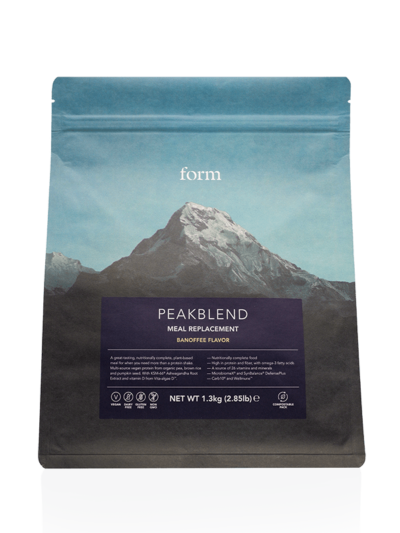Productivity Specialists Explain How to Stay On-Track With Your Resolutions

Though most of us enter a fresh year with the best of intentions – lose weight, bulk up, stress less – the hard truth is that the majority of those shiny resolutions end up getting abandoned before the seasons change.
Stats suggest that the failure rate for New Year’s resolutions sits at an estimated 80%, with most people throwing in the towel by the second week of February. Motivation drops, life gets in the way and healthy new habits struggle to stick.
So how can you get a handle on your goals and edge out the odds? Leaning into smart productivity tools and tech that can make repetitive tasks both appealing and achievable is one place to start. We asked two experts, Maria Lovelady, a life and ADHD coach, and Emma Jeffreys, a coach and NLP practitioner, to share their best advice.

Get your body double on
Find it easier to knuckle down to a task when you’re surrounded by other people furiously typing away? Whether you’re writing a business proposal, penning a book project or just need some fuel to power through your life admin, a buddy system can keep distractions at bay.
“Body doubling is a strategy that’s built on the idea that having people around you can increase your productivity,” says Lovelady. “The theory is that the presence of another person improves your ability to focus. In his book, ‘More Attention, Less Deficit’, Ari Tucker explains: ‘If somebody else is in the room, there’s a little bit of social pressure to use your time well.’”
While research on body doubling is limited, the mere existence of the ‘Study With Me’ community on YouTube, which has racked up billions of views in recent years, suggests it’s a tool that anecdotally works for many.
“If you don’t have friends nearby for a local meetup, you could try virtual co-working platforms like Flow Club and Flow, which can connect you to like-minded people,” suggests Lovelady.
Break it down into a list
Chunking vague and lofty resolutions (hello, ‘keep fit’ and ‘eat healthy’) into smaller, measurable steps can help you to build those 1% habits that lead to bigger goal success. “I often help clients harness their big-picture thinking by writing lists,” says Lovelady. “I find that breaking goals into steps helps prioritise tasks and achieve results.”
There’s solid science to back up the thinking too: a 2011 study by psychologists Baumeister and Masicampo found that people tend to perform better at a task once they create a concrete plan for completing it. And when they break that task down into a list of smaller steps? They’re more likely to see it through to completion, rather than give up midway.
While Lovelady is a fan of old-fashioned pen and paper, there are a host of different apps that can keep your lists digitised, making them less likely to get misplaced. “I like Trello as it lets you create lists with digital reminders, which can be really helpful if you’re likely to put your personal goals and resolutions on the back burner when life gets busy.”
Reward yourself
If you’re feeling particularly dispassionate about rolling out of bed for an early morning leg workout or meditation session, bundling the habit with a reward can keep you on track with your training. In the field of positive psychology, this is what’s known as habit stacking.
“Rewarding yourself for completing tasks boosts dopamine, a neurotransmitter that drives motivation by linking activities to pleasure,” explains Lovelady. “This reinforcement then encourages us to repeat the habit, as we crave the reward associated with the hard work.”
The key thing? “Keep your dopamine hits positive and sustainable long-term,” stresses Lovelady. Rather than uncorking a bottle of wine, try making a chocolate salted caramel protein shake or listening to an episode of your favourite podcast. “This way, rewards are both sustainable and able to be repeated often,” she adds.

Roll out the tomato
When it comes to getting difficult stuff done, monotasking is your friend. “The Pomodoro technique has been scientifically proven to increase productivity,” notes Jeffreys. “It keeps cognitive boredom at bay, keeps us motivated by rewarding us and helps us to focus on one task at a time.”
The time management method, which originated in Italy in the 1980s, involves working in focused intervals, called pomodoros, followed by short breaks. You simply choose a task, set a timer for 25 minutes, and spend that time working with no distractions. “If anything pops into your head and threatens to derail you, like an email you forgot to send, then just write it down and carry on,” advises Jeffreys.
When the timer goes off, you can then reward yourself with a short five-minute break. “Stretch, dance to a favourite tune, make a coffee, go for a short walk,” suggests Jeffreys.
Over time, these 25-minute work blocks and structured breaks can help you to work more efficiently, while slashing the time you spend procrastinating on social media.
Lean on the ‘five-minute rule’
Whether you’re starting to wax and wane on your workouts or you’ve lost steam on a goal to redecorate your apartment, the five-minute rule can help you to kill procrastination in its tracks.
This straightforward cognitive behavioural therapy technique involves committing to working on a task for just five minutes, and then deciding whether to continue once the times up. It’s designed to solve the universal human tendency to put off starting difficult tasks, with many of us finding taking the first step the hardest part.
“Once we actually get started on a task, we often find we’re suddenly in the zone and feel motivated to carry on,” notes Jeffreys, “whether that’s going for a run, answering emails or trying to work on a bigger goal project.”
She continues: “All too often, the tasks we set ourselves are just too big, too daunting, too unmanageable.” But just five minutes of effort with no pressure to keep going? That’s a New Year’s resolution we can definitely get on board with.


















